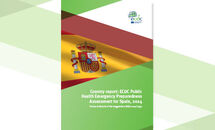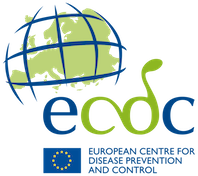Country report: ECDC Public Health Emergency Preparedness Assessment for Spain, 2024 - Under Article 8 of the Regulation (EU) 2022/2371
The aim of the Public Health Emergency Preparedness Assessment, as mandated in Article 8 of the Regulation (EU) 2022/2371 on serious cross border threats to health, is to improve prevention, preparedness and response planning in European Union/European Economic Area (EU/EEA) countries through the implementation of recommendations following individual country assessments. As specified in the Regulation, each EU/EEA country will undergo an assessment every three years, with the first cycle of these occurring between 2024 and 2026.
Executive summary
Background
This report presents the findings of the first assessment conducted in Spain. This involved a desk review of relevant documents, followed by a five-day country visit that took place between 14 and 18 October 2024. As per the assessment methodology, all of the 16 capacities included in Article 7 of the Implementing Regulation (EU) 2023/1808 self-assessment template were assessed, with five of them considered in-depth: Laboratory (Capacity 3); Surveillance (Capacity 4); Health Emergency Management (Capacity 6); and Antimicrobial resistance (AMR) and healthcare-associated infections (Capacity 12) and Risk communication and community engagement (Capacity 8). The report also provides specific recommendations for the country to improve prevention, preparedness and response planning. Spain is requested to provide an action plan addressing these recommendations within nine months of the receipt of this report.
Key findings
Spain has strong collaboration between sectors. However, its decentralised health system requires strengthened coordination between national and regional levels, supported by clear legal frameworks, to ensure effective preparedness and response to public health emergencies. The country is in the process of developing key pieces of legislation, including a Royal Decree for the development of the National Preparedness and Response Plan, and intends to establish a National Public Health Agency.
The Coordinating Center for Health Alerts and Emergencies (CCAES) at Spain’s Ministry of Health serves as the focal point for both the Early Warning and Response System (EWRS) and the International Health Regulations (IHR). The Centre also has its own system of daily epidemic intelligence to monitor for potential threats.
If a public health event occurs, the CCAES works closely with the National Centre for Epidemiology (CNE), National Centre for Microbiology (CNM), regional public health authorities and other sectors to monitor key epidemiological indicators and produce risk assessments when needed.
After the COVID-19 pandemic, the Influenza Surveillance system in Spain was gradually replaced by an integrated surveillance system for influenza, COVID-19 and respiratory syncytial virus (RSV). A robust, tier-based laboratory system is in place in Spain, serving clinical diagnostics and public health, including decentralised capacities for advanced genomic characterisation. The Spanish Surveillance System platform (SIVIES) at CNE guarantees confidentiality in event notifications, and there is a 24/7 on-duty system in place.
One of the major gaps identified during the mission was the lack of dedicated staff for Risk communication, Community engagement and Infodemic Management (RCCE-IM) activities at the Ministry of Health. Communication efforts are highly subject to the political situation, and there is a need for technical RCCE-IM capacities that operate independently of political changes.
Download





